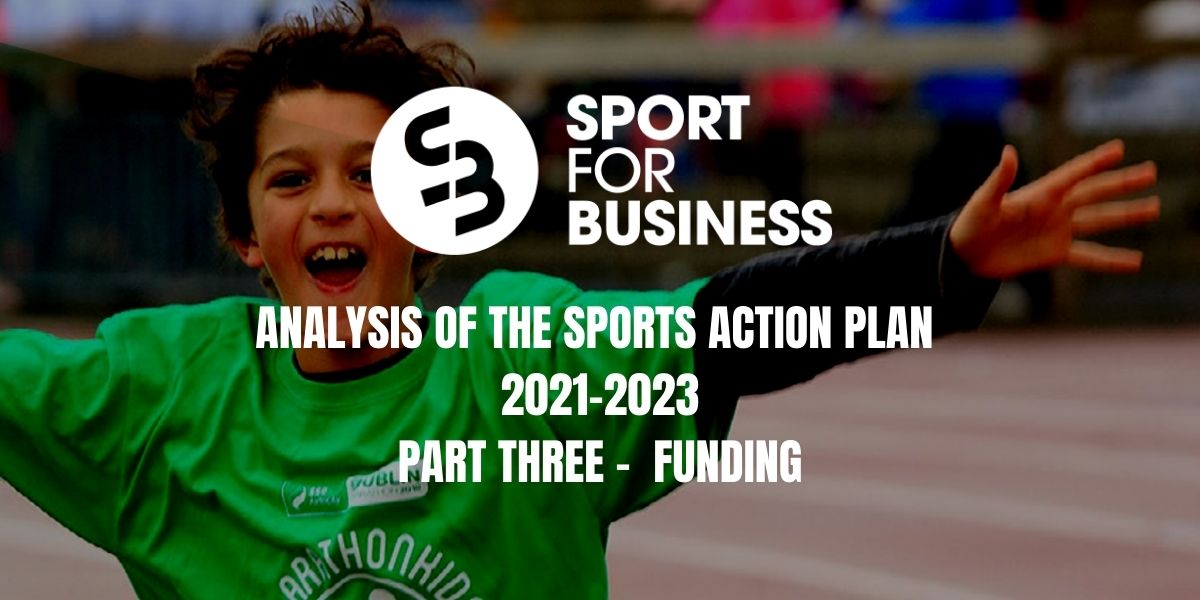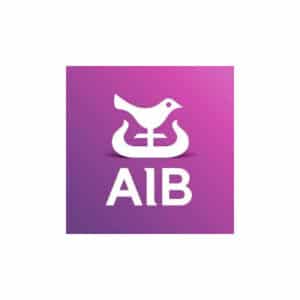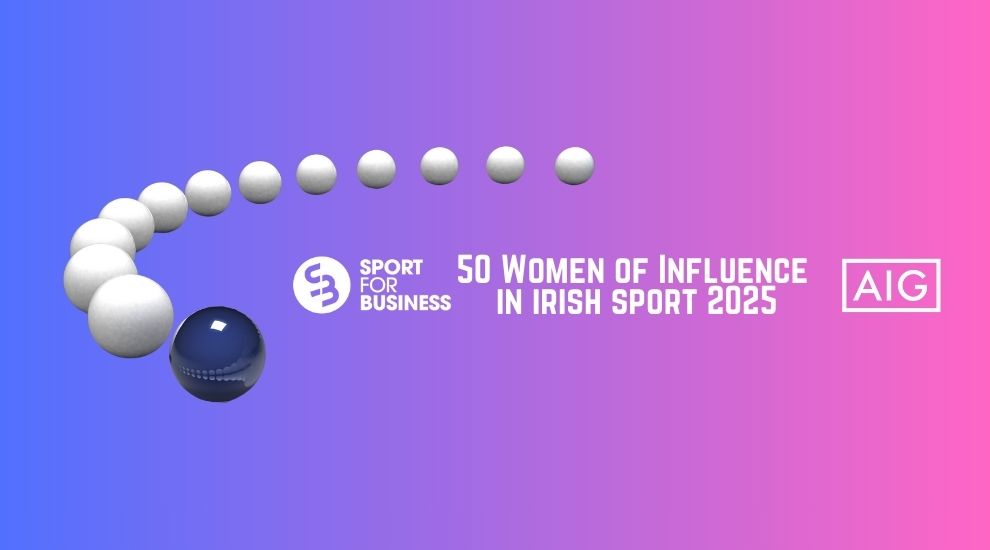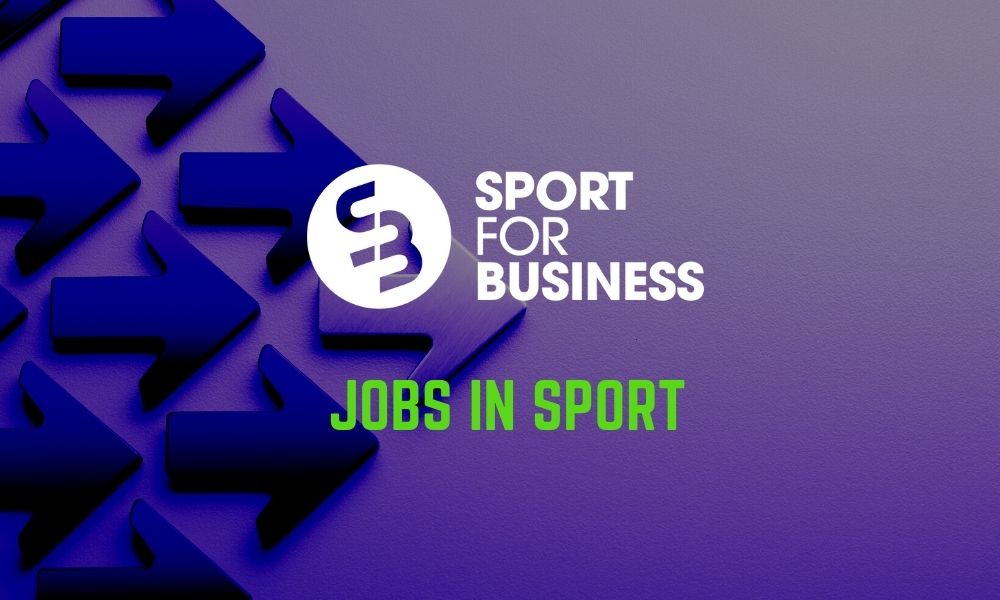The Sports Action Plan announced last week is a blueprint for Government investment, Sport Ireland enabling, and stakeholder delivery in sport over the next two years.
We are looking at the seven key focus areas one by one and third up today is perhaps the one that most sporting bodies will have turned to first, that of Funding
The National Sports Policy set a target of a doubling of funding to sport to a figure of €220 million annualy by 2027. Covid could have knocked that back but it did not and the Government has been strong in maintaining and growing the funding that is needed to make the most of the many benefits of sport and physical activity.
There are eight action points under the heading of funding.
3.1 Establish an Innovation Fund to promote innovative collaborative projects aimed at increasing sustainable participation in sport.
This initiative kicked off with a well attended session at the Sport Ireland Campus just prior to the Covid lockdowns. Work has conituned ina quiet fashion and a number of projects are already underway. Focusing on Innovation is looking to tomorrow rather than just what is in front of you and that can only be a good thing.
3.2 Applying a ‘Sport for all’ ethos, establish an Inclusion, Diversity and Equality Fund to promote increased and sustainable participation in sport among children, adolescents and young adults, those from lower socio-economic groups, persons with a disability, the LGBTI+ community, the Traveller community and other ethnic minorities.
Focusing on the areas where sport and physical activity are less part of the ‘norm’ is crucially important. Local Sports Partnerships are on the front line of this and making money available to them will allow for different programes to be trialled, measured, imprived and repeated.
3.3 Deliver and advance all successful projects under the Large Scale Sport Infrastructure Fund. In relation to the Sports Capital and Equipment Programme, ensure that an appropriate level of funding is ring-fenced for National Governing Bodies of Sport to include allocations for high performance equipment. Ensure that funding is also available under the SCEP for appropriate renewal / maintenance of sports facilities where this work is deemed necessary to keep the facilities in operation.
The headline projects are the ones where the bulk of money will go but this is an important reminder that maintaining the infrastructure we have is as important as adding to it.
3.4 Modelled on the “Black Gold” programme in New Zealand, introduce a scheme for the attraction of corporate and philanthropic finance to support Ireland’s high-performance programme.
Philanthropy has rarely been succesfully harnessed for sport in the way it has in other areas including social programmes and the arts. Imagine a Chuck Feeney to assist our athletes achieve their potential without having to continually look over their shoulder.
3.5 In support of the national coaching plan, establish a dedicated, collaborative Coaching Fund for NGBs.
All sports believe themselves to be unique but the fundamentals of coaching are very broad based and collaboration across codes and central funding of programmes that can be of benefit to many rather than one have huge value. Look at the impact of the Sport ireland Institute and how that has lifted so many standards.
3.6 Develop a common funding framework to guide the allocation of State funding for Gaelic Games across all codes.
This is perhaps the one item that will raise most eyebrows. There is a clear need to do the right thing across all Gaelic Games and yet they are run by three different governing bodies with differing levels of commercial revenue, resource and personnel. At club level all three are often treated as one and boys and girls coming into a club would rarely know of the differences. Getting the right mix of maximising the impact of investmenmt for all players is important to get right and a key focus of government thinking.
2.7 Prepare business cases for possible taxation reform for:
(a) the granting of charitable status for NGBs;
(b) the lowering of the €250 eligibility threshold for capital reliefs on individual donations to sports capital projects;
(c) the extension of the zero-rated VAT regime;
(d) the extension of taxation reliefs on capital donations to include donations for sports participation/coaching programmes; and
(e) the incentivisation of personal exercise opportunities.
The Federation of Irish Sport has been given the lead role in this, which is fitting as they have long pressed the case for tax reforms that can make efficient use of a tax system that has proven flexible and imaginatiove enough to be a real positive driver in other sectors.
3.8 Promote the provision of defibrillator machines throughout the sporting network.
Sports clubs are located at the heart of communities in every corner of the country. Having a well maintained network of defibrillators can save lives in the immediate short term. That needs also to be backed by training of volunteers to make sure they are charged and ready for when they are needed.
Join us through the week as we look in detail at each of the seven core areas.
Analysis of the Sports Action Plan – Part Three – Communication and Promotion
Analysis of the Sports Action Plan – Part Three – Covid Recovery
“A powerful and influential network of information and collaboration”
Download our latest membership brochure here.
Sport for Business Partners









































